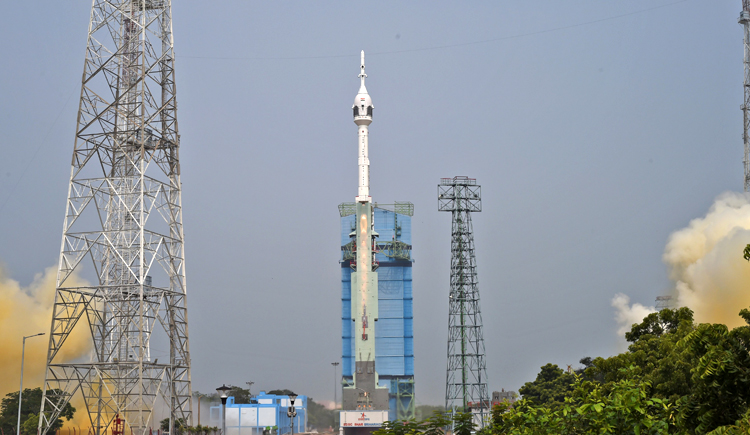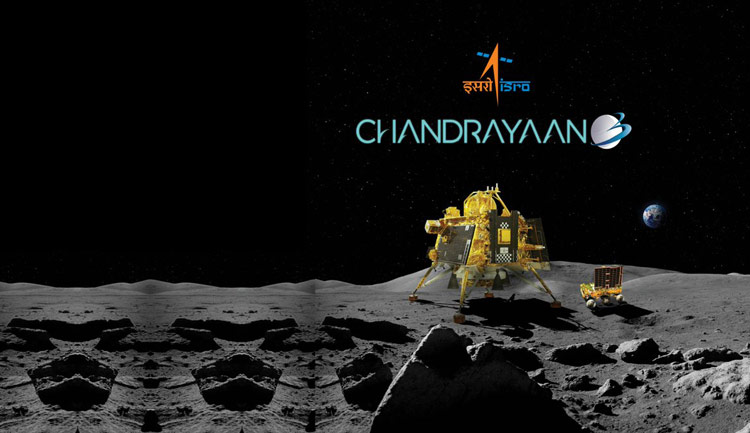INDIAN ARMED FORCES CHIEFS ON OUR RELENTLESS AND FOCUSED PUBLISHING EFFORTS

The insightful articles, inspiring narrations and analytical perspectives presented by the Editorial Team, establish an alluring connect with the reader. My compliments and best wishes to SP Guide Publications.

"Over the past 60 years, the growth of SP Guide Publications has mirrored the rising stature of Indian Navy. Its well-researched and informative magazines on Defence and Aerospace sector have served to shape an educated opinion of our military personnel, policy makers and the public alike. I wish SP's Publication team continued success, fair winds and following seas in all future endeavour!"

Since, its inception in 1964, SP Guide Publications has consistently demonstrated commitment to high-quality journalism in the aerospace and defence sectors, earning a well-deserved reputation as Asia's largest media house in this domain. I wish SP Guide Publications continued success in its pursuit of excellence.
India's Space Crusade
With a planned series of Lunar missions, India aims to set up Space Station by 2035 and send first Indian to Moon by 2040
 |
The Author is Former Director General of Information Systems and A Special Forces Veteran, Indian Army |

On October 21, 2023 the Indian Space Research Organisation (ISRO) conducted another successful test that would contribute to India's Gaganyaan Mission to send Indian astronauts into space; the liquid-propelled single-stage Test Vehicle (TV-D1) indigenous system crucial for the safety of our astronauts - the Crew Escape System. The successful test, launched from the Satish Dhawan Space Centre, validated the low and high altitude, and jettisoning motors for safely ejecting astronauts away from the vehicle in emergent situations.
The Gaganyaan mission is a testament to India's ambition to launch human beings into low Earth orbit and safely return them to Earth

Six seconds into the TV-D1 flight, the fin enabling system was activated, followed by the activation of the Crew Escape System Pillbox at a speed of Mach 1.25, at an altitude of 11.8 km. The High Energy Motor (HEM) then fired, propelling the vehicle further into the atmosphere. When the vehicle reached Mach 1.21 at an altitude of 11.9 km, the Crew Escape System separated from the rocket booster.
The Gaganyaan mission is a testament to India's ambition to launch human beings into low Earth orbit and safely return them to Earth. Four selected astronauts are undergoing rigorous training, including Gaganyaan Mission-specific training, at the Astronaut Training Facility in Bengaluru. India's space crusade received a boost when it became the first country to land a spacecraft near the unexplored South Pole of the Moon in August 2023 and the fourth nation to achieve a soft landing. After that success, India launched a rocket to study the Sun.
Earlier on October 17, the government issued a statement saying, "Building on the success of the Indian space initiatives, including the recent Chandrayaan-3 and Aditya L-1 missions, the Prime Minister has directed that India should now aim for new and ambitious goals, including setting up 'Bharatiya Antariksha Station' (Indian Space Station) by 2035 and sending first Indian to the moon by 2040. To realise this vision, the Department of Space will develop a roadmap for moon exploration." Prime Minister Narendra Modi has also called on scientists to work on missions to Venus and Mars.
ISRO has already been working on payloads for 'Shukrayaan' (the Venus Mission) and the Mars Lander Mission (Mangalyaan)
ISRO has planned 20 major tests before the final manned mission of the Gaganyaan Mission in 2025. After the successful TV-DI test for the Crew Escape System, ISRO will also conduct three more test missions - D2, D3 and D4. It will also conduct a space mission with the humanoid 'Vyomitra' before the final manned mission to launch 2-3 astronauts into space for three days at an altitude of 400 km in 2025.

After the successful mission moon landing mission of Chandrayaan-3 in August this year, ISRO is planning to launch a series of lunar mission, including one in conjunction with Japan, The manned lunar mission will be a very challenging operation as ISRO will work on sending humans to the Moon only after sending its first astronauts into space; after the Gaganyaan mission is successful, ISRO had planned to send humans to the Moon. With the Prime Minister laying the deadline of 2040, ISRO will now accelerate its lunar mission.
With regard to the 'Bharatiya Antariksha Station' (Indian Space Station) by 2035, the initial plan was an indigenous space station weighing 20 tons and maintained at an orbit of approximately 400 km above the Earth, where Indian astronauts could stay for 15-2o days. Originally planned to be launched in 2030, the space station mission has been postponed to 2035 as the Gaganyaan mission, which will pave the way for building a space station, had undergone delays owing to stalling of work during the period of the COVID-19 pandemic.
ISRO Chairman revealed that NASA experts wanted India to share its space technology with the US after witnessing the developmental activities of Chandrayaan-3 spacecraft
As for the interplanetary missions, ISRO has already been working on payloads for 'Shukrayaan' (the Venus Mission) and the Mars Lander Mission (Mangalyaan). No deadlines have been planned or rather announced for these missions. However, the dictum given by Prime Minister Narendra Modi, these interplanetary missions would receive a new momentum. It may be recalled that ISRO had successfully launched the Mars orbiter mission (Mangalyaan) in the very first attempt. After entering Mars orbit in 2014, the Mangalyaan operated for 7.5 years observing the Martian landscape and studying their composition using five instruments.
Elaborating on the upcoming missions being undertaken, ISRO Chairman S. Somanath has said, "We have exploration missions. We have plans to go to Mars, Venus, again sometime to the Moon. We also have programmes to look at the climate and weather of Earth." Stressing that the scientists at ISRO would be focused on taking up regular missions like launching satellites for communications and remote sensing, he said scientific missions are also in the pipeline to look at issues like aeronomy, thermal imaging, and climate change impact assessment."

Asked whether scientists were able to receive any kind of response from the Vikram lander of the Chandrayaan-3 spacecraft, which successfully made a soft-landing on the surface of the Moon on August 23, Somnath said Vikram had done its job very well during the lunar day (equivalent of 14 Earth days) at which time it was programmed to perform its functions, adding, "It is happily sleeping on the Moon. It has done its job very well. Maybe if it wishes to wake up, let it wake up. Until then, we will wait." ISRO made efforts to re-establish communication with rover Pragyan and lander Vikram after they were put into sleep mode in September following the onset of night on the Moon.
Interestingly, ISRO Chairman S. Somanath has revealed that NASA experts wanted India to share its space technology with the US after witnessing the developmental activities of Chandrayaan-3 spacecraft. Addressing students in Tamil Nadu, he said, "In Chandrayaan-3, when we designed and developed the spacecraft, we invited experts from the Jet Propulsion Laboratory, NASA-JPL, who do all the rockets and most difficult missions. They said look at the scientific instruments, they are very cheap. Very easy to build and they are high technology. How did you build it? Why don't you sell this to America?" He also said that ISRO's initiative of establishing a second launch-pad at Kulasekharapatnam in southern Thoothukudi District of Tamil Nadu was progressing and that it would be ready in about two years' time.
Finally, India's space crusade is making exponential; progress but our focus must also remain on the Chinese programme of weaponising space. We cannot afford to remain behind in this sphere.





